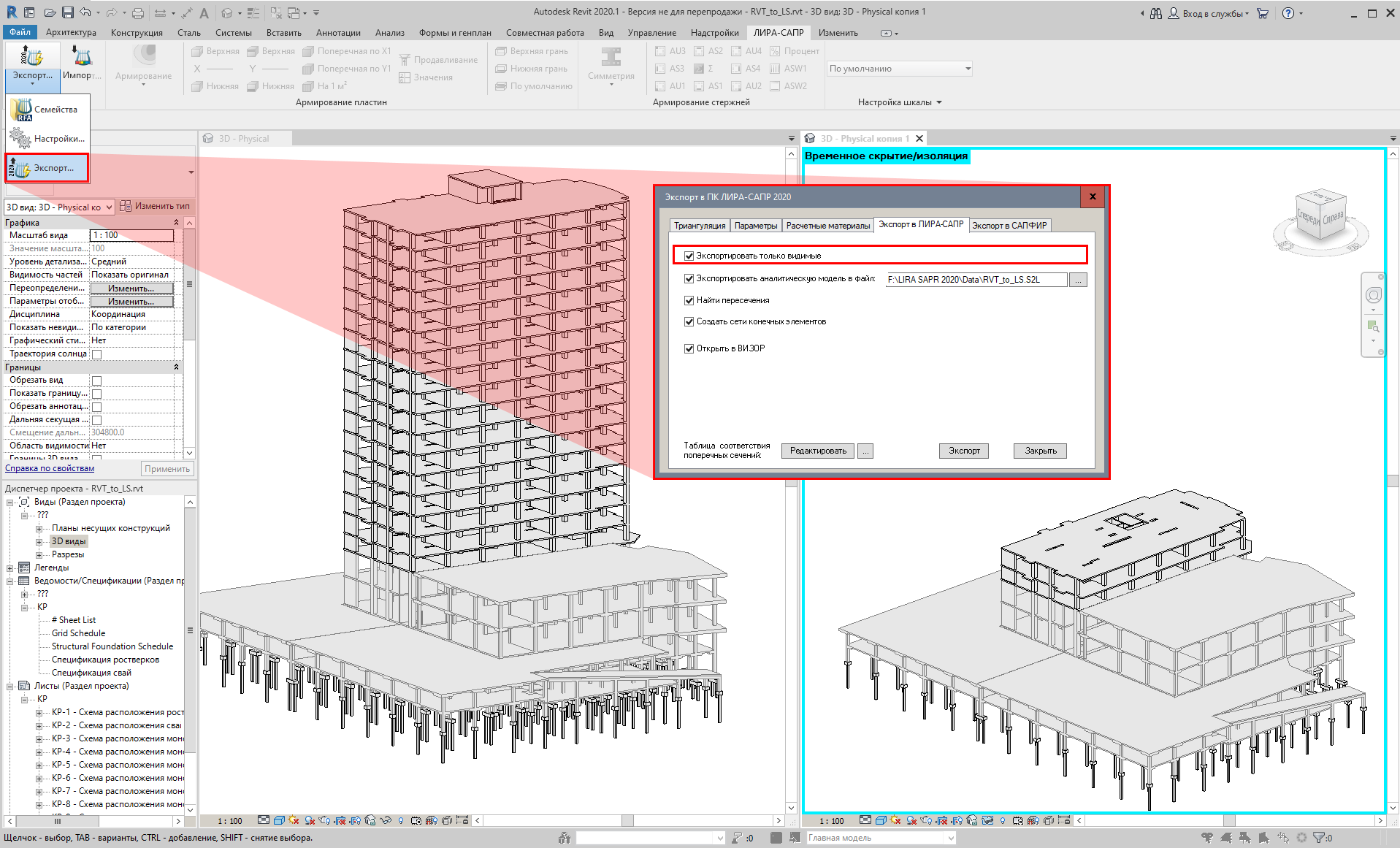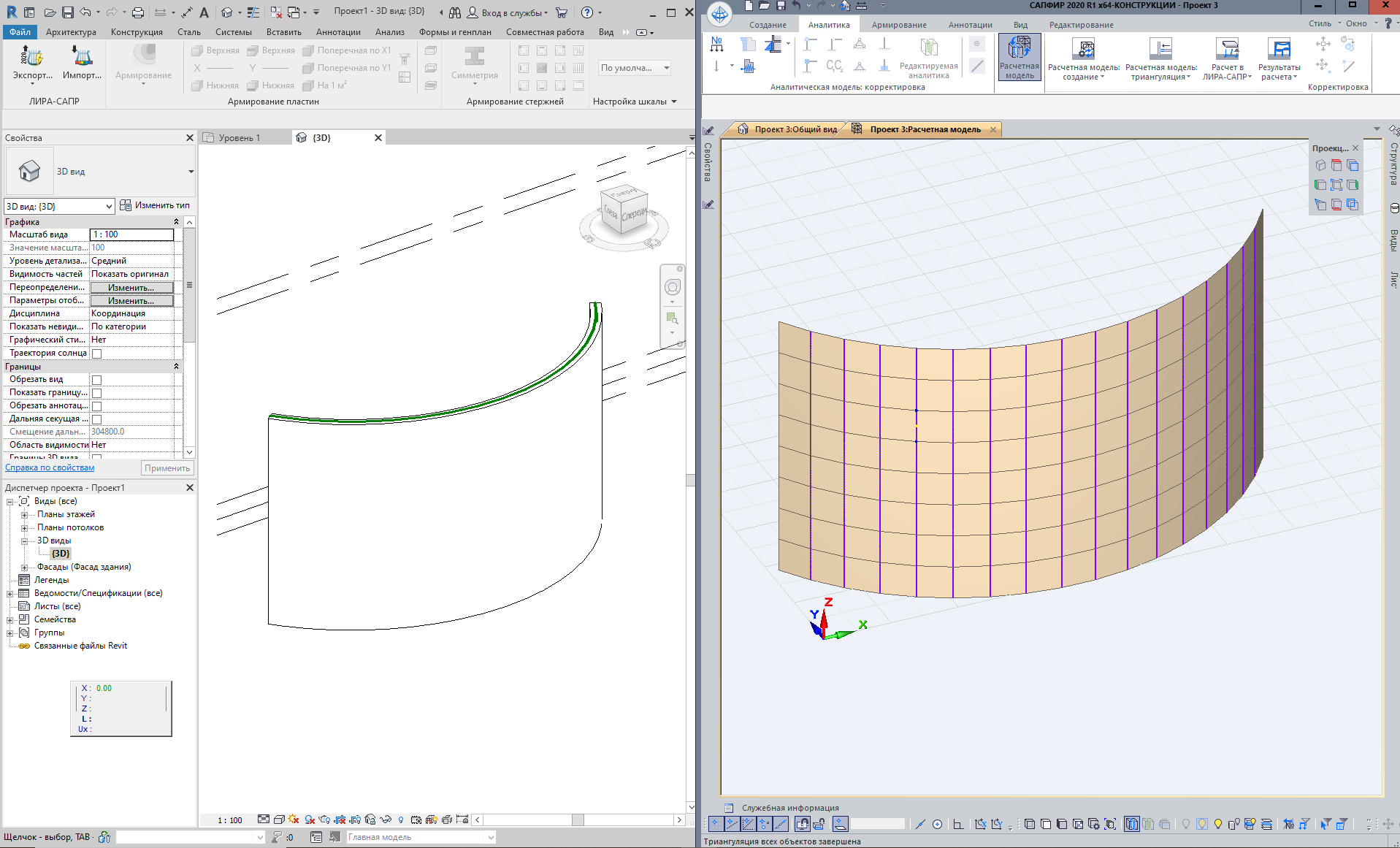Interoperability Ц components of BIM-technology
New version LIRA-SAPR 2020 contains the following items: new modules "Progressive collapse" and "Bar analogues", API, options to define and edit loads on the FEM with SAPFIR tools, the 6th DOF for shells, mass condensation, iterative FE of joint, enhanced tools for triangulation, etc.
Autodesk Revit
New version introduces enhanced options of two-way integration with Autodesk Revit:
- export from Revit with the option to select part of the model that should be transferred to LIRA-SAPR. It saves time significantly when developing a project of combined systems as well as multi-section buildings / structures. It will also be useful for any local calculations;
- new option to transfer distributed loads across an area with holes, as well as with different variants for nesting levels of the load contours (e.g. the live load on the floor slab is applied across the whole area, while the internal load contour for the stair-elevator joint is defined with a load of different intensity);
- import of curvilinear walls;
- export of the output data with selected reinforcement only for the part of design model.
Tekla Structures 2019(i)
Two-way converter Tekla Structures 2019(≥) Ц LIRA-SAPR Ц Tekla Structures 2019(≥). It enables the user to carry out complete analysis and desifn of steel and RC sructures.
Input tables
New options are available for input tables:
- data may be transferred between active problem files;
- new tables where the user could define parameters for elastic foundation (subgrade moduli for plate FEs, bar FEs and specific elements for simulating the soil resistance outside the foundation plate);
- tables where the user could define the stiffness of the elements in the model (standard, steel, steel & reinforced concrete and numerical types of stiffness) and parameters that describe nonlinear stress-strain diagrams for the main and reinforcing materials;
- API tools are provided for all available tables.
add comment



